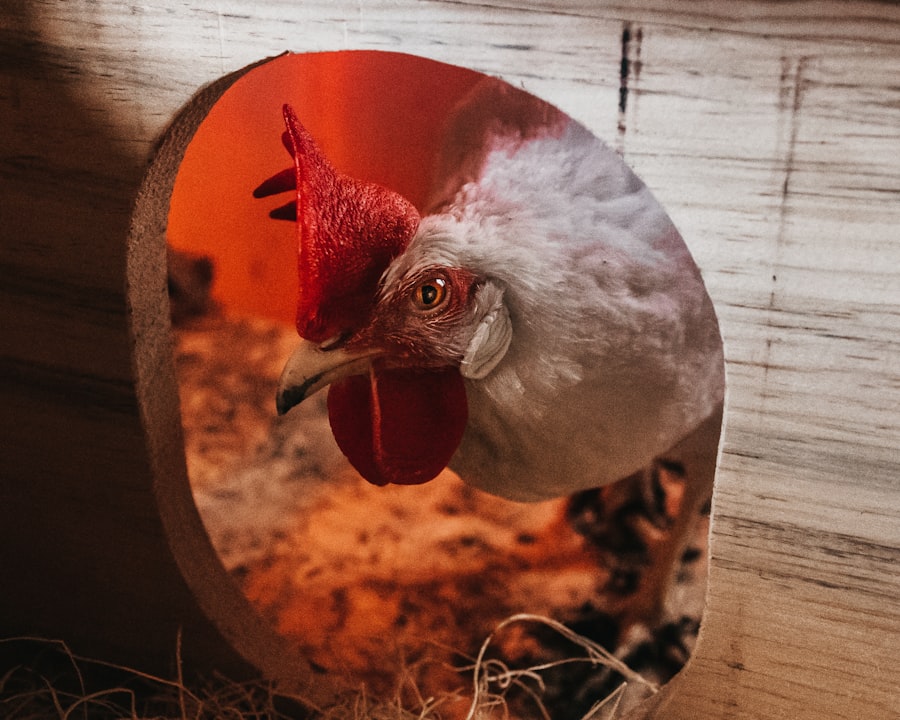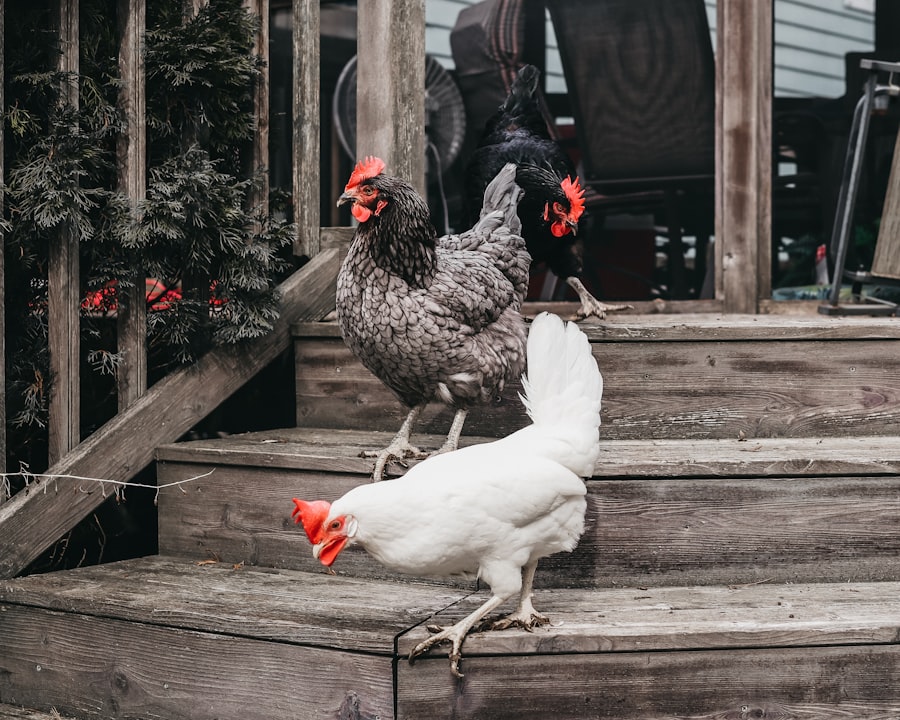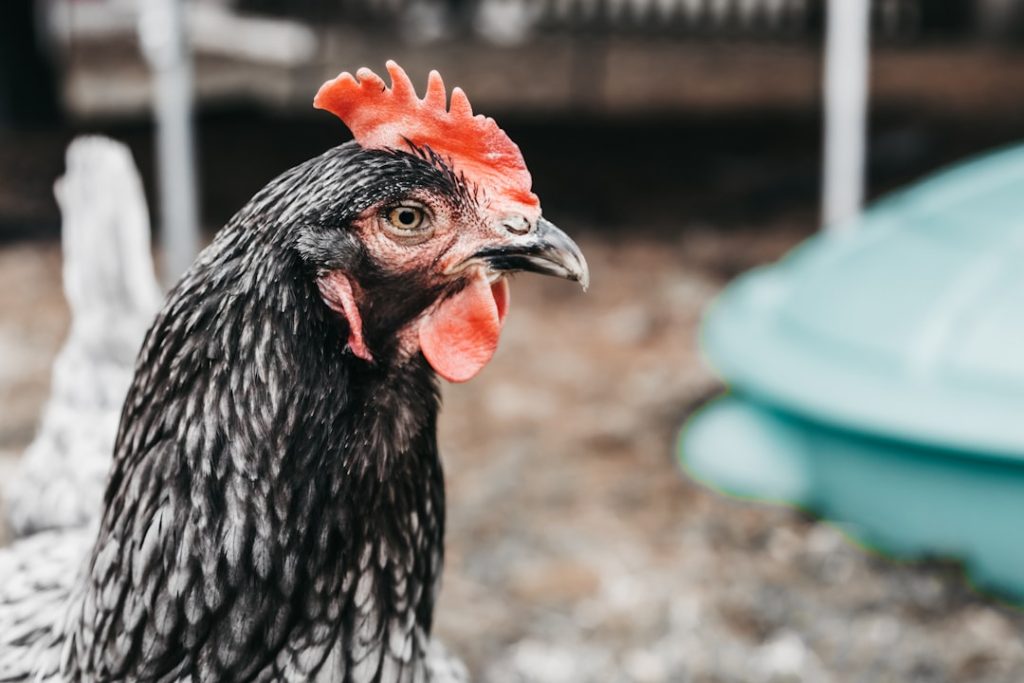Chickens are social creatures with a diverse range of behaviors, including foraging, dust bathing, and roosting. Understanding these natural behaviors is essential for preventing escapes. Chickens are naturally curious and exploratory, which can lead to escape attempts.
They are opportunistic and will exploit any weaknesses in their environment to escape. Chickens are also easily startled, potentially causing panic and flight responses. Chickens possess a strong homing instinct, often attempting to return to their coop or flock after escaping.
This characteristic can make containment challenging once they have fled. Furthermore, chickens are highly adaptable and can quickly learn to exploit environmental weaknesses for escape. Recognizing these behavioral traits allows chicken owners to better anticipate and prevent escape attempts.
Table of Contents
Key Takeaways
- Chickens are social animals and their behavior is influenced by their natural instincts and social hierarchy within the flock.
- Common escape routes for chickens include gaps in fencing, open gates, and low-hanging branches or structures that they can use to fly over barriers.
- Effective containment measures for chickens include using secure fencing, installing predator-proof locks on coop doors, and regularly inspecting and repairing any potential escape routes.
- Creating a secure coop environment involves providing adequate space, roosting areas, nesting boxes, and protection from predators and the elements.
- Potential stressors for chickens that can lead to escape behavior include overcrowding, lack of food or water, and exposure to predators or loud noises.
- Seeking professional advice and support from experienced chicken keepers or animal behaviorists can provide valuable insights and solutions for improving containment strategies.
- Monitoring and adjusting containment strategies based on the behavior and needs of the chickens is essential for maintaining a secure and safe environment.
Identifying common escape routes
Common Escape Routes
Common escape routes include gaps in fencing, loose or broken wire, and gaps under doors or gates. Chickens are also known to be skilled fliers and can easily fly over low fences or barriers.
Digging and Tunneling
Additionally, chickens are known to be adept at digging and can tunnel under fences or barriers. By identifying these common escape routes, chicken owners can take proactive measures to secure their enclosures and prevent escape.
Securing the Enclosure
Chickens are also known to be opportunistic and will take advantage of any weaknesses in their environment to escape. By identifying these common escape routes, chicken owners can take proactive measures to secure their enclosures and prevent escape.
Implementing effective containment measures

To prevent chickens from escaping, it is important to implement effective containment measures. This can include reinforcing fencing and barriers, repairing any gaps or weaknesses, and securing doors and gates. Additionally, chicken owners can consider using predator-proof netting or wire to cover the top of the enclosure to prevent chickens from flying out.
It is also important to regularly inspect the enclosure for any signs of wear or damage and to promptly repair any issues that could lead to escape. In addition to physical barriers, chicken owners can also consider using deterrents such as motion-activated sprinklers or sound devices to discourage chickens from attempting to escape. By implementing these effective containment measures, chicken owners can significantly reduce the risk of escape and keep their chickens safe and secure.
Creating a secure coop environment
Creating a secure coop environment is essential in preventing chickens from escaping. This includes ensuring that the coop is well-constructed and free from any gaps or weaknesses that could allow chickens to escape. It is important to regularly inspect the coop for any signs of wear or damage and to promptly repair any issues that could lead to escape.
Additionally, chicken owners should ensure that the coop is predator-proof to protect their chickens from potential threats. It is also important to provide adequate space and enrichment within the coop to prevent boredom and reduce the likelihood of escape attempts. This can include providing perches, nesting boxes, and dust bathing areas for the chickens to engage in natural behaviors.
By creating a secure coop environment, chicken owners can provide their chickens with a safe and comfortable space while minimizing the risk of escape.
Addressing potential stressors causing escape behavior
Chickens may attempt to escape due to stressors in their environment. Common stressors include overcrowding, lack of enrichment, and exposure to predators or other threats. By addressing these potential stressors, chicken owners can reduce the likelihood of escape attempts.
This can include providing adequate space and enrichment within the coop, as well as implementing measures to protect the chickens from predators. Additionally, it is important to monitor the behavior of the chickens for signs of stress or anxiety, such as feather pecking or aggression. By addressing potential stressors causing escape behavior, chicken owners can create a more harmonious environment for their chickens and reduce the risk of escape.
Seeking professional advice and support

If chicken owners are struggling to contain their chickens or are experiencing frequent escape attempts, it may be beneficial to seek professional advice and support. This can include consulting with a veterinarian or animal behaviorist who can provide guidance on how to address escape behavior and create a more secure environment for the chickens. Additionally, joining a community of fellow chicken owners can provide valuable support and advice on containment strategies.
Professional advice and support can also help chicken owners identify any underlying issues that may be contributing to escape behavior, such as overcrowding or inadequate enrichment. By seeking professional advice and support, chicken owners can gain valuable insights into how to effectively contain their chickens and create a safe and secure environment for them.
Monitoring and adjusting containment strategies
Once effective containment measures have been implemented, it is important for chicken owners to regularly monitor the enclosure for any signs of wear or damage that could lead to escape. Additionally, it is important to observe the behavior of the chickens for any signs of stress or anxiety that could indicate a need for adjustments to containment strategies. By monitoring and adjusting containment strategies as needed, chicken owners can ensure that their chickens remain safe and secure within their enclosure.
This may include making repairs as needed, providing additional enrichment within the coop, or implementing new deterrents to discourage escape attempts. By remaining vigilant and proactive in monitoring and adjusting containment strategies, chicken owners can minimize the risk of escape and provide their chickens with a safe and comfortable environment.
If you’re having trouble keeping your chickens from escaping, you may want to consider investing in a more secure coop. Poultry Wizard offers a helpful article on Snaplock Chicken Coops that could provide the solution to your problem. These coops are designed to keep your chickens safe and secure, giving you peace of mind and preventing any further escape attempts.
FAQs
Why do chickens keep escaping?
Chickens may escape due to a variety of reasons such as seeking food, exploring new areas, or trying to escape from predators.
How can I prevent chickens from escaping?
To prevent chickens from escaping, ensure that their coop and run are secure with proper fencing, latches, and locks. Regularly inspect the enclosure for any potential escape routes and promptly fix them.
What are some common escape routes for chickens?
Common escape routes for chickens include gaps in fencing, holes under the coop or run, open doors or gates, and low-hanging branches that allow them to fly over the fence.
Are there specific breeds of chickens that are more prone to escaping?
Some chicken breeds are known to be more adventurous and prone to escaping, such as the Leghorn and Ancona breeds. However, individual personalities and environmental factors also play a role in escape behavior.
Can free-ranging chickens be trained to stay within a certain area?
Yes, free-ranging chickens can be trained to stay within a certain area using positive reinforcement, such as treats and rewards for staying within boundaries. It may take time and consistency to train them effectively.
Meet Walter, the feathered-friend fanatic of Florida! Nestled in the sunshine state, Walter struts through life with his feathered companions, clucking his way to happiness. With a coop that’s fancier than a five-star hotel, he’s the Don Juan of the chicken world. When he’s not teaching his hens to do the cha-cha, you’ll find him in a heated debate with his prized rooster, Sir Clucks-a-Lot. Walter’s poultry passion is no yolk; he’s the sunny-side-up guy you never knew you needed in your flock of friends!







